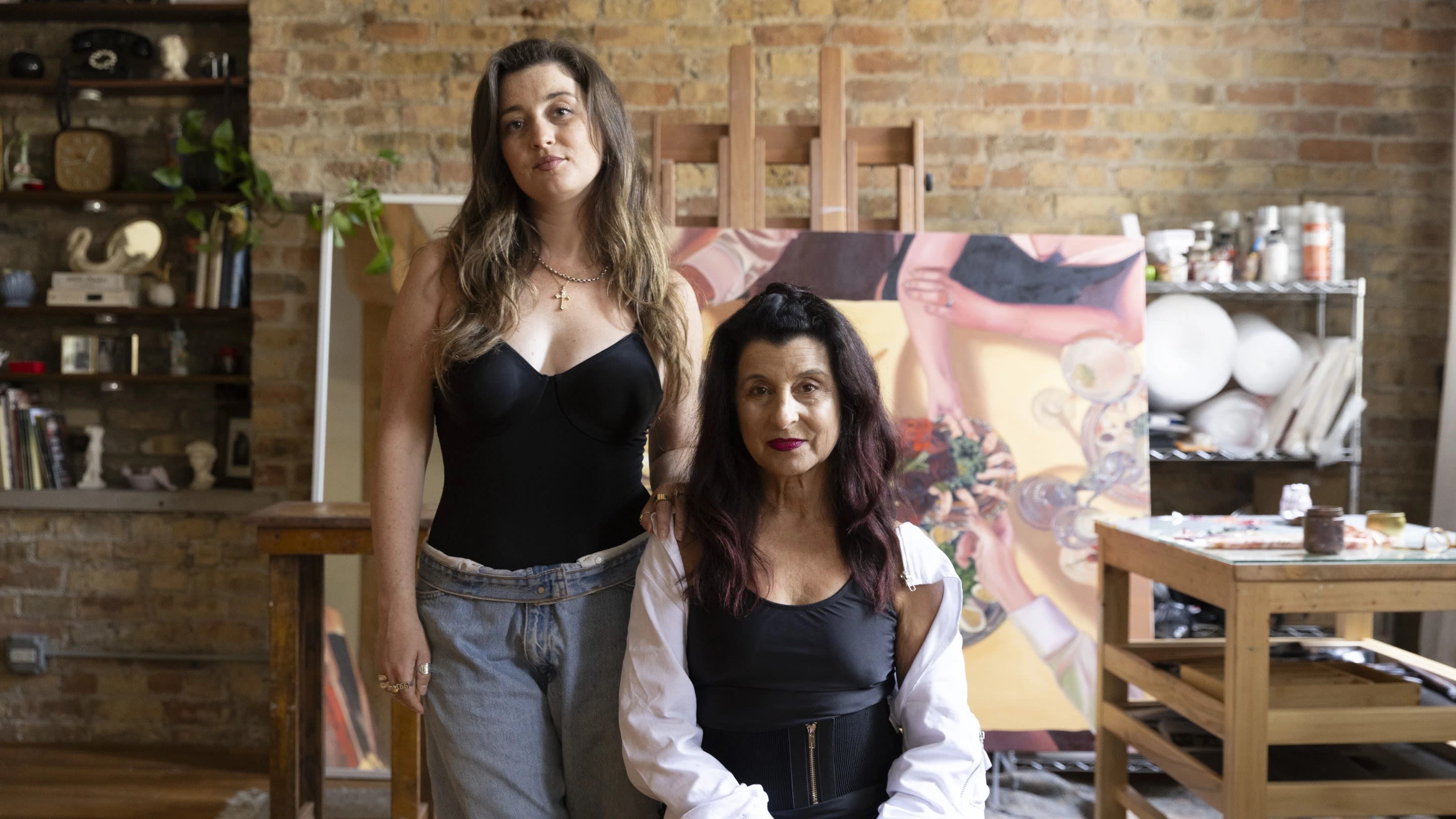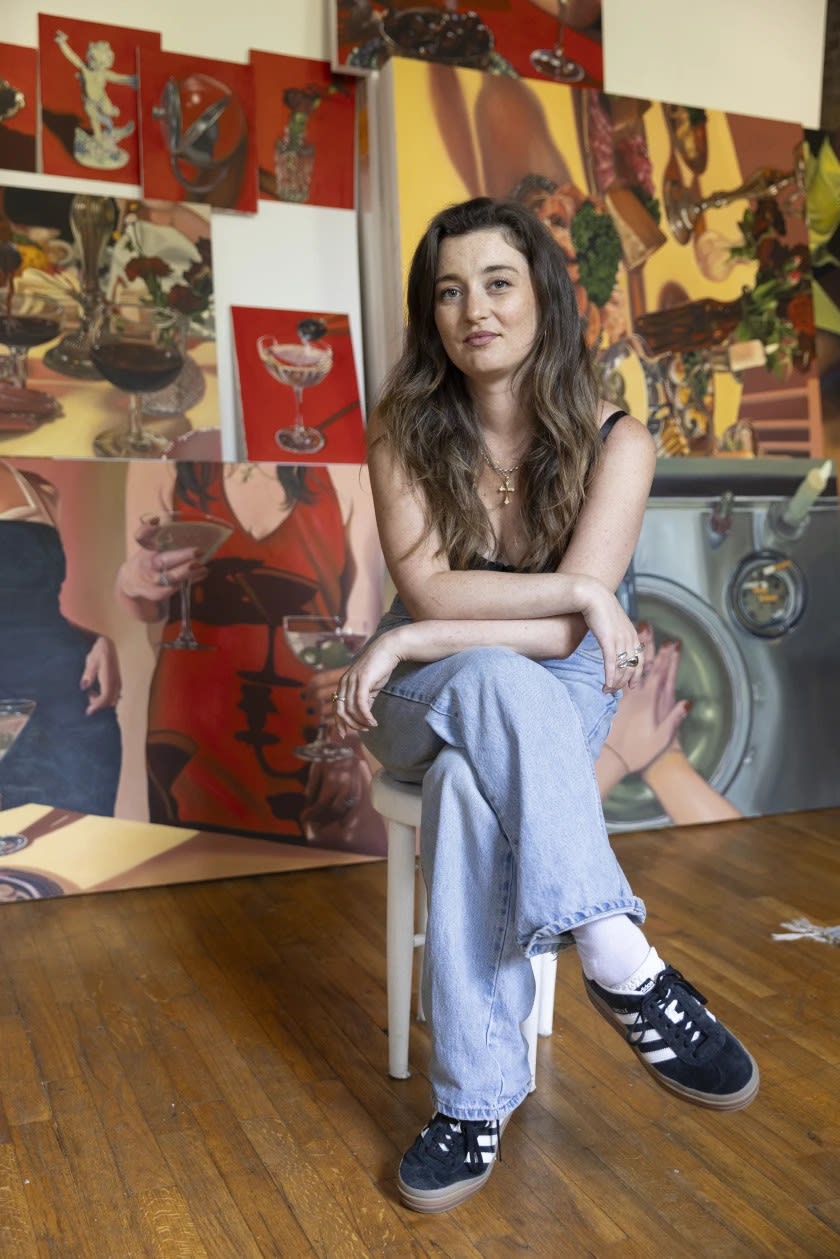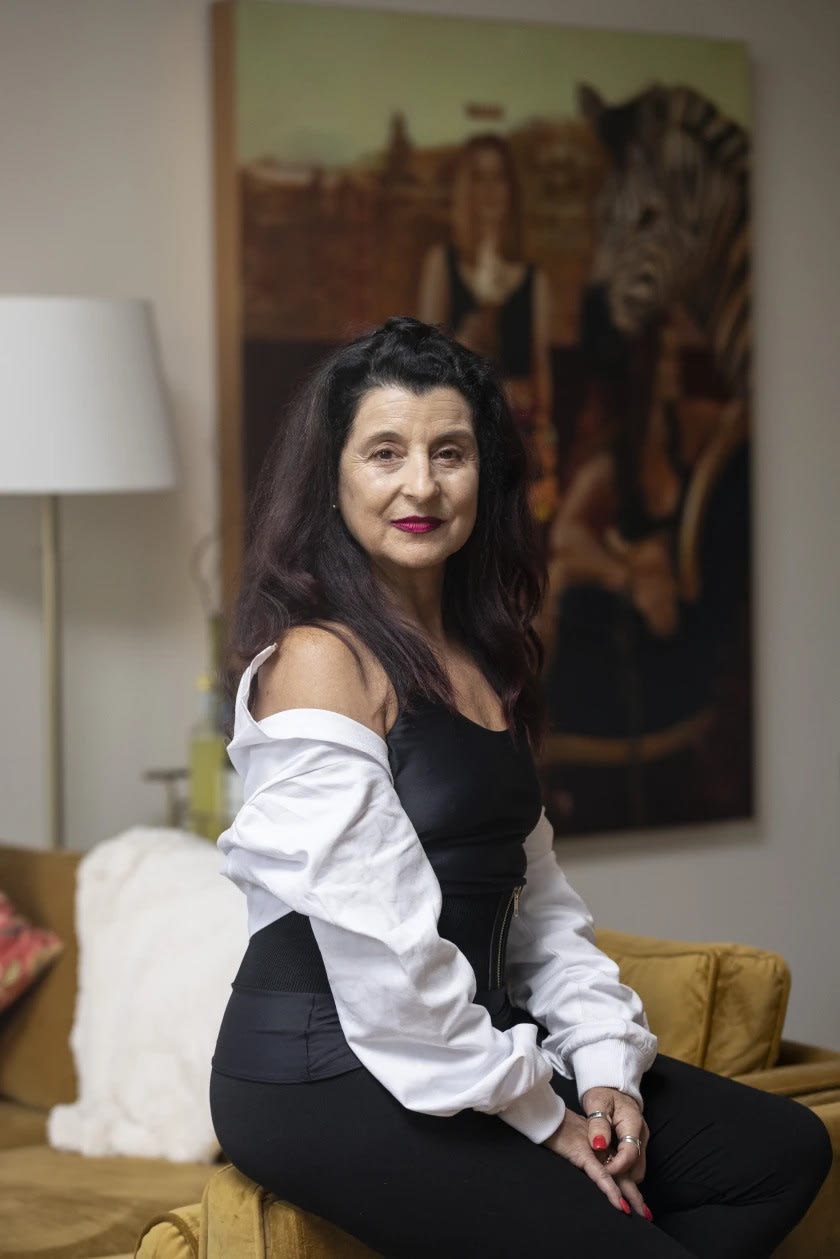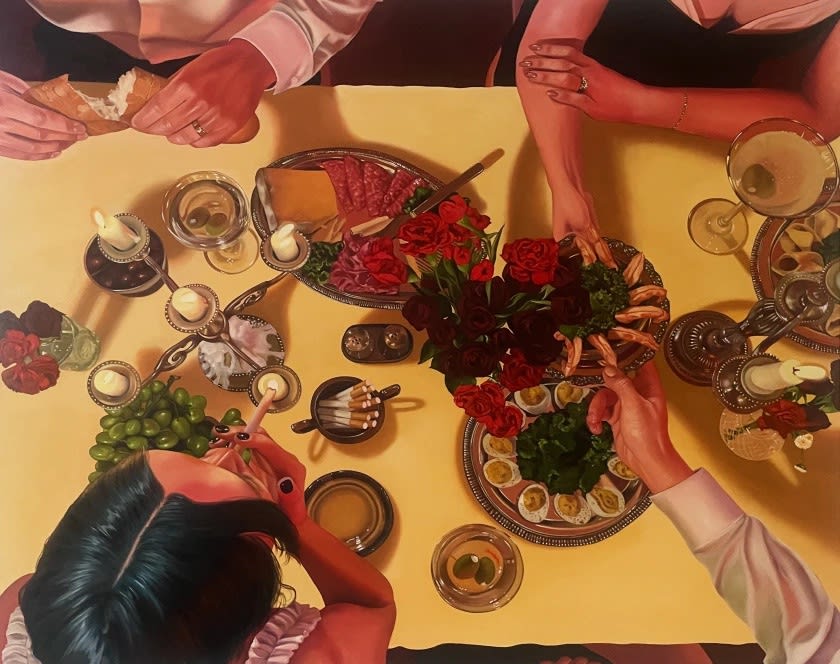
Thérèse Mulgrew and her mother, Wendy S. Rolfe, talk by phone every day. They chat about politics, summarize the documentaries they’ve watched and trace the emotional highs and lows of their lives. What they rarely discuss, however, is their work.
Both Mulgrew, 33, and Rolfe, 65, paint. Rolfe, who lives in Iowa and has worked as a painter for decades, constructs surreal, haunting images that reflect her interest in human psychology and dreams.
In contrast, Mulgrew, who started painting only a few years ago after a brief career in the New York fashion world, creates cinematic canvases that conjure moody interiors and quiet conversations unfolding just out of earshot. “We leave each other alone,” says Rolfe. “But we do influence each other just in our philosophy on life and what we share with one another.”
While the two take different approaches to their craft, there remains an artistic connection between mother and daughter. That’s what they were interested in exploring in their new show, which hangs at Povos Gallery in Chicago’s West Town neighborhood through Sept. 28. “We wanted to make the work organically and separately, and then come together and see how it would connect,” says Mulgrew, who lives in West Town. “It’s just more interesting that way.”
It’s rare to see an art show that revolves around a mother-daughter pair. And it’s precisely the intangible link between them, says Lucca Colombelli, director of Povos, that compelled him to feature art by both Mulgrew and Rolfe at the gallery.
“I liked the idea of generational knowledge among women,” says Colombelli, a graduate of the School of the Art Institute who founded the gallery online in 2020 and opened a physical space one year later. “It’s almost like looking at art history. There is some sort of inexplicable through line, a hand that runs in the family. It’s cool to trace back that family memory and lineage.”



“We leave each other alone,” says Rolfe on discussing painting with her daughter. “But we do influence each other just in our philosophy on life and what we share with one another.”
Manuel Martinez/WBEZ
Last month, Mulgrew and Rolfe finally showed one another their paintings. They instantly recognized a connection between the pieces. First, the deep, rich colors that imbued both sets of paintings; and second, the presence of food — specifically, bread. While Mulgrew’s series centers around a dinner party, her mother’s art, though far less narrative, also features loaves of bread.
Those shared themes led the women to the show’s title, “Breaking Bread.”
Mulgrew, who has 14 paintings in the show, had spent much of the year at the dinner table. Specifically, an intimate meal staged on a marigold yellow tablecloth decorated with burgundy flowers, flickering candles, and bowls filled with olives and cigarettes. The scene serves as Mulgrew’s central subject in a set of paintings that evoke a sensuous, martini-soaked evening. “It’s very inspired by my childhood, growing up around a lot of dinner parties,” reflects Mulgrew. “Moments of people coming together and human connection.”
Her painting Dinner Party II, for example, brings to life the soirée with delicate yet assured brushwork. In it, the food and objects take center stage while the emotions of the figures remain deliberately opaque. In the absence of faces, much of the image’s story is told through hands and gestures. “Hands are so expressive,” says Mulgrew. “They tell their own stories. They’re also what we see most of the time in our own daily life, so it’s almost like you’re seeing the [table] from your own view.”

Thérèse Mulgrew, Dinner Party II, 2024. Oil on canvas, 48 x 60 inches.
Courtesy of Povos
Two hundred miles away, outside Dubuque, Iowa, Rolfe spent recent months exploring her experiences as both a mother and daughter, translating them into surreal, dream-like oil paintings. One such work, Princess & Kitty, one of 10 paintings Rolfe made for the show, shows a young girl seated on an ornately decorated chaise, her expression one of quiet solemnity. The figure, says Rolfe, reflects her own grief after the loss of her own mother two years ago. “That took me back to my childhood,” reflects Rolfe. “It doesn’t matter how old you are — when the person who loves you the most is gone, you know you’re vulnerable.”
Next to the girl rests two loaves of bread, a symbol that evokes her own family tradition. “I’m a bread maker,” says Rolfe. “I make Italian bread for everybody, especially people who are hurting, sad, or going through a hard time. It’s something that nurtures people.”

Wendy S. Rolfe, Princess & Kitty, 2024. Oil on panel, 28 x 28 inches.
Courtesy of Povos
Together, the 24 paintings in “Breaking Bread” weave a tapestry of stories, and the most unexpected one for Mulgrew and Rolfe resonates across every canvas. “We never expected to be artists together,” says Mulgrew. “I never thought we’d have this experience and adventure. That’s been the biggest surprise.”
A surprise indeed, seconds Rolfe, but a joyous, nourishing one.
Elly Fishman is a freelance writer and the author of Refugee High: Coming of Age in America.


